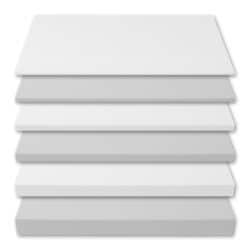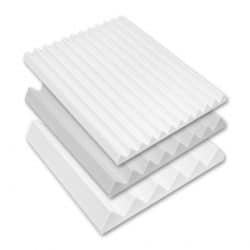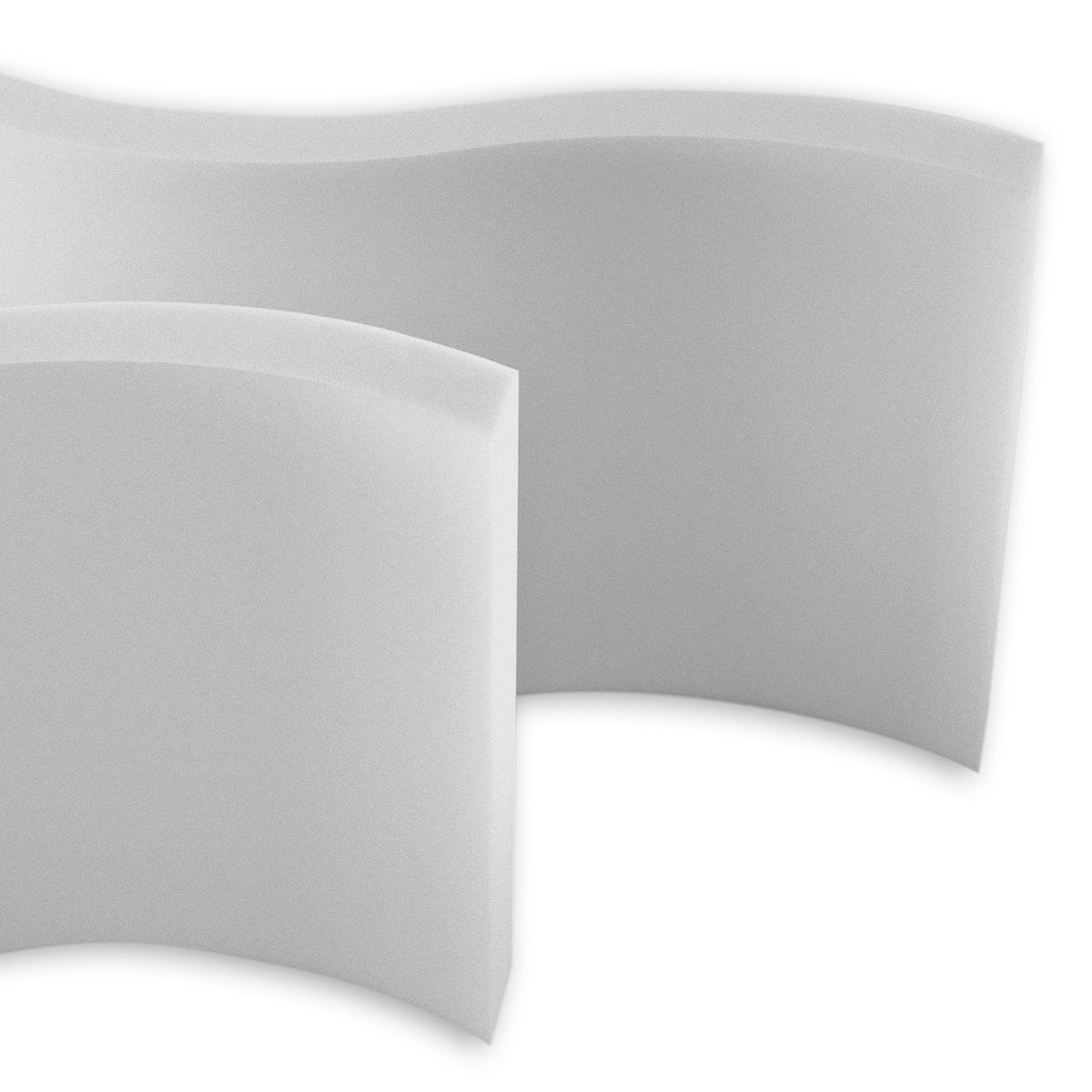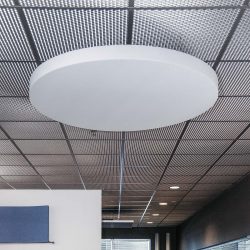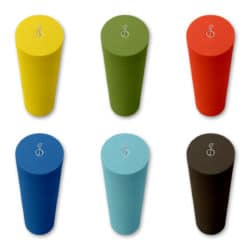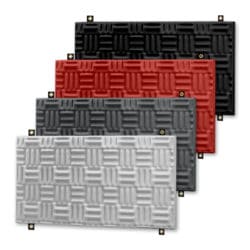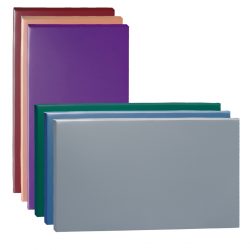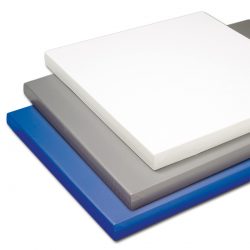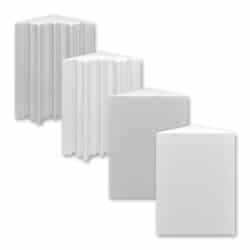Acoustic Foam
We offer two premium-grade lines of acoustic foam that are suitable for both commercial and residential use. The core material is Class 1 (or Class A) fire-rated which means they are safe for use in both public and private spaces.
Our AlphaSorb® Acoustic Foam line absorbs sound and reduces reverberation for a wide range of applications. Easy to install, they are available in an array of patterns, thicknesses, and sizes. Our composite soundproof foam includes a barrier septum for applications requiring both sound absorption and sound blocking capability.
Sonex® sound-absorbing foam is an industry standard for reducing noise. Sonex® provides a large selection of materials for ceiling and wall applications. You can choose from natural foam colors or HPC coating for durability and cleanability.
Showing 1–20 of 33 results
-
$332.00 – $548.00
-
Sale!$296.99–$523.99$296.99–$523.99 -
AlphaSorb® Pyramid Acoustic Foam
$372.99 – $525.99
-
AlphaSorb® Linear Acoustic Foam
$357.99 – $446.99
-
$365.99 – $734.99
-
$626.99 – $763.99
-
Whisperwave® Ribbon Acoustic Foam
$378.00 – $671.00
-
AlphaSorb® Acoustic Foam Wave Ceiling Cloud
$354.99 – $870.99
-
AlphaSorb® Acoustic Foam Wave Ceiling Baffle
$354.99 – $870.99
-
SONEX® Geometric Ceiling Cloud
Learn More
-
$332.00 – $548.00
-
Whisperwave® Ribbon Sound Baffle
$450.00 – $804.00
-
$576.00 – $1,304.00
-
SONEX® Valueline Hanging Baffle
$406.00 – $800.00
-
$502.00 – $834.00
-
SONEX® Clean Acoustic Sound Baffle
$623.00
-
$571.00
-
SONEX® Clean Acoustic Ceiling Tile
$571.00 – $702.00
-
AlphaSorb® Acoustic Foam Bass Trap
$316.99 – $804.99
Frequently Asked Questions
Acoustic Foam is made of a foamed ceramic called melamine. The material has open cells that take the energy out of reflected sound, reducing the time noise stays in the air. The shorter the time the clearer all the new sounds (human speech, music, etc.) become because they are not competing with all the other sounds in the air.
Someone might ask if acoustic foam works because they are looking for a material to block sound, and clearly a lightweight foam product isn’t suited for that. But that doesn’t mean acoustic foam is useless! If you are looking for a way to reduce echo and background sounds, otherwise known as noise pollution, acoustic foam is a great choice.
Acoustic foam is a product which comes in many shapes to help reduce reverberation (echo) in various spaces such as recording studios, schools, manufacturing plants, gymnasiums, pools or any area where speech intelligibility is important. Foam comes in lots of shapes and sizes to meet just about any aesthetic need. It is very lightweight and can easily be glued or mechanically fastened to walls or ceilings. It can also be used inside of housings for noisy machinery or computer server rooms to reduce any noise trying to escape into nearby areas, reducing the need for hearing protection or making an office environment more comfortable.
If you need to soundproof a space and block sounds entirely, standard acoustic foam won’t help. The only way to stop sounds from entering or exiting a room is to use a material that acts as a sound barrier. There are two types of acoustic products, those that block sound and those that absorb sound. Acoustic foam is great for absorbing sound when there is a lot of reverberation and echo in a room that makes it difficult to hear, or in a recording studio where it’s important to have high quality sounds.
Acoustical Foam is a very cost effective and versatile material that has many forms to help solve a wide variety of acoustical problems efficiently and attractively. These foam panels are available in a variety of colors, patterns, thicknesses and sound ratings. Using a Class A melamine foam core, they can be in the form of wall or ceiling panels, corner bass traps, ceiling tiles, ceiling clouds, and hanging baffles. Our acoustic foams are perfect for reducing echo in factories, recording and broadcast studios, auditoriums, churches, classrooms and many other facilities.
Acoustic foam products that are layered with a sound barrier work well for soundproofing. You may work in an industrial or manufacturing plant where machinery is loud and can cause hearing damage. It can help reduce the sound pressure and how far the sound travels if the room is large. Our Alphasorb Composite Foam is a soundproof foam that combines our Audioseal Sound Barrier and Alphasorb Flat Foam to create a very effective sound blocking and absorbing material that is often used to line interiors of machinery housings and reduce noise the workers are subjected to. Getting noise levels down below OSHA standards can save a business significantly by not requiring hearing protection and annual hearing checks tests for their employees, quickly paying for the investment in savings.
Acoustic Foam is a very versatile material that is both a cost effective and attractive solution to echo problems. Studio foam is important so a recording engineer can get a clean track that isn’t cluttered with room noise. Acoustic foam panels placed on the walls and ceiling of a studio vocal booth make it so the recording is very clear and just the voice with no extra sounds. More and more these days we are having online video conferences both from the office and home office. I’m sure you’ve had a call where someone was very difficult to understand because their room has lots of echo. Sound foam can help tame the room sounds and make your meetings much more pleasant and effective.

